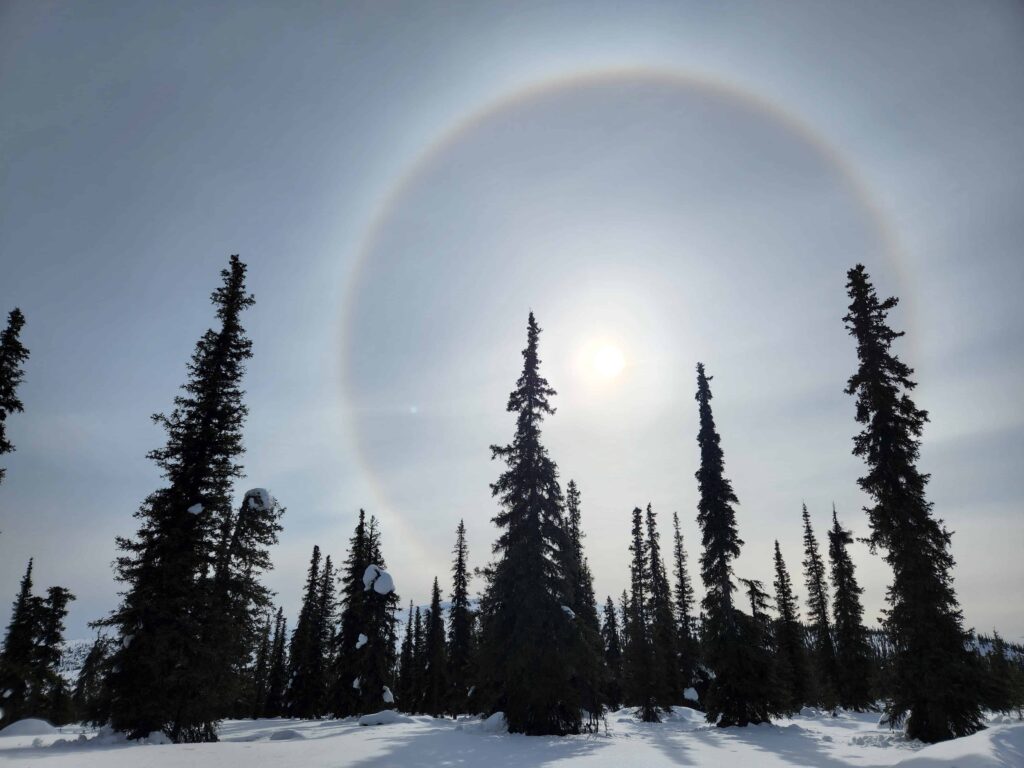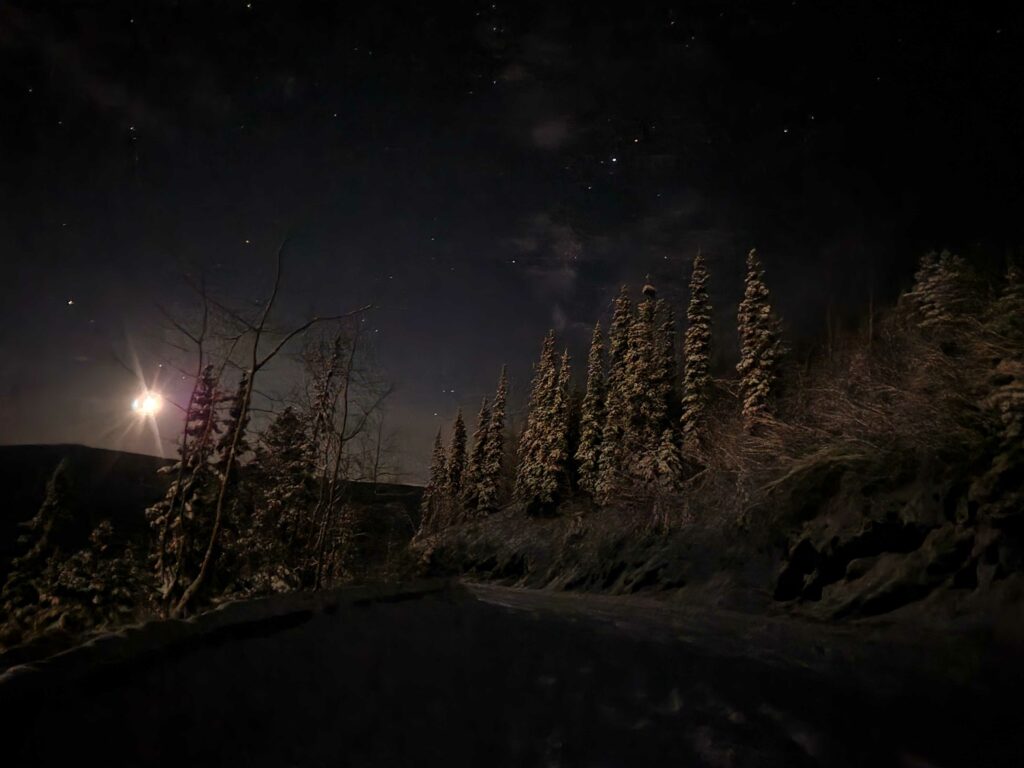



On Thursday, December 21, at 8:27 p.m., a total of five hours, 37 minutes and 47 seconds of daylight will grace the rosy, yet perhaps weary, cheeks of Whitehorse locals. The shortest day of the year (shorter than the June solstice by 13 hours and 31 minutes) chalks us northerners up to being pretty hardcore, or in the very least vitamin D deprived.
We know it’s the winter solstice because we have measured it to be the shortest day of the year.
We’ve measured the difference between light and dark; the length of daylight versus night.
Traditionally, we would have measured the time of day, seasons and these important times of transition, by directly tracking the sun’s movement across the sky. Because of our need to coordinate globally, today we rely almost entirely on standardized time, represented on our digital and analog clocks. This measurement of time is our attempt at capturing the movement of the sun across the sky.
However, because it simplifies our natural world, it diverges from reality slightly.
Standardized time took off in the mid-1800s. British railway companies and communication advancements spurred the Europeans to standardize time. Eventually, Greenwich, England, was deemed prime meridian for standardized time (Greenwich Mean Time or GMT). The prime meridian is an imaginary longitudinal line running between the North Pole and the South Pole. It is like ground zero where most time zones around the world are measured from.
Because of the global influence of Britain, the adoption of the time zone by the United States and the reliance on the GMT in the dominant mariner economy, GMT became the prime meridian for most of the world. Eventually, GMT was replaced globally (though still remains a time zone) with a “time standard” called Coordinated Universal Time (UTC), which apparently is more precise because it’s based on atomic clocks and the spin of the Earth. UTC continues to be the basis for civil time worldwide.
Only the tip of the toppling “time iceberg”: in our efforts to try and concretize consistent time, we also invented the conundrum that standardized time is literally what we make it or, truer to the point, where we measure it from.
For example, if you were using a GPS to try and locate zero degrees longitude on the line marking the
prime meridian at the Royal Greenwich Observatory in London, England (where GMT was born), you wouldn’t find it—you’d be a few hundred feet off the mark. This is because GPS relies on satellite data to geolocate. Satellites orbit Earth in a truly spherical manner around the actual mass of the Earth’s core, which is not how the observatory and prime meridian were originally measured. In a way, the GPS models a more “perfect” version of Earth, which results in a different location for the prime meridian. It’s said that this doesn’t make the original Greenwich prime meridian incorrect; rather, it brings to light that we can pretty much base standard time on any longitudinal marker around the planet.
It’s difficult business, accurately telling time. Try as we may to perfect it, nature is a little too fluid to accurately package up and standardize, and here’s why: The Earth’s orbit around the sun is more elliptical than spherical. As the Earth travels closer to the sun, it speeds up. Also, the Earth has a tilt to its axis. In the winter, the northern hemisphere tilts away from the sun during its orbit, and in the summer, it tilts towards the sun. Whereas during the equinoxes, it does neither.
Turns out our original timekeeper, the sun, keeps the most accurate time after all. Being part of nature, it naturally captures the “irregularities” of Earth’s orbit. When the sun is at its highest point in the sky, it is literally solar noon.
Although most accurate, solar time is different everywhere. It’s more like local time. Back in the day, many cultures used the sun to tell solar time by tracking the sun’s movement across the sky. In a sense, each community had their own “time zone” based on this method.
And, interestingly, the time the sun tells us is almost always different than what time our clocks say. In Whitehorse, for example, when the sun is at its highest point in the sky, meaning it’s our “solar noon,” your clock will display something closer to 2 p.m.!
And, to top it off, when we take a closer look at the shortest day of the year, the sunrise and sunset do not agree! Although the winter solstice is usually the shortest day of the year in terms of day length, the latest sunrise and earliest sunset do not occur on this day! The latest sunrise instead comes after the winter solstice, and the earliest sunset comes before it. This is because during this time of year, solar noon comes later and later each day and, naturally, the sunrise and sunset follow. Confused? Me too!
Let’s discuss leap years (just kidding, I wouldn’t do that to you).
We’ve got nature doing its thing and then us interpreting nature doing its thing, and they don’t totally match up. We have abstracted nature with the idea that we can now coordinate ourselves around this abstraction. Yes, our technological advancements can be interpreted as more accurate than our previous calculations. It is absolutely amazing what we are able to figure out with these churning brains, technology and the cash to support our efforts. However, each and every time the rug still gets pulled out from beneath us and it all seems to boil down to―it’s how we look at it, which means where we look
at it from.
In the end, although perhaps inconvenient to the modern human, natural rhythms reign. The sun
continues to be the most accurate and least abstract magistrate of them all, always there, keeping time―even on the darkest day.




